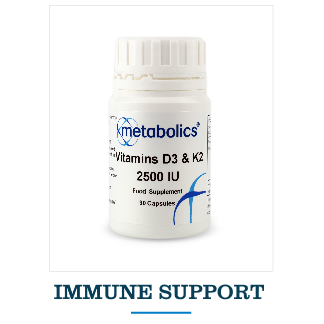Vitamins For Skin
The skin is the largest organ in the body, making up 15% of total body weight. It protects the body from bacteria, viruses, funguses, parasites, chemicals and the sun. It is important as a sensory organ, for temperature regulation, preventing water loss and storing water and fat.
The skin is made up of 3 layers, the epidermis, the dermis and the subcutis (subcutaneous fat layer). The epidermis contains melanocytes that are cells that produce skin pigment known as melanin. The dermis is the middle layer of skin containing blood and lymph vessels, hair follicles and sweat glands, nerves, collagen and special cells called fibroblasts, which make collagen. The subcutis is a network of collagen and fat cells conferring protection, strength and insulation against heat loss.
It takes 28 days from the birth of a new skin cell and its shedding as a dead skin cell. If this process speeds up, as in psoriasis where the surface skin cells increase and heap up, or slows down as in old age or nutritional deficiencies then the skin health can be affected.
Nice healthy skin should be;
- Warm, but not hot as this may indicate inflammation
- Smooth, not coarse
- Moist, not dry or sweaty
- Good colour
- Be intact- no sores or cracks
- Have good turgor. If the skin is pinched and lifted, it should rebound back to its original position. If it stays in the position it was pinched in this may indicate dehydration, malnutrition or a poor collagen system, although skin does lose its turgidity and elasticity with age
Which Vitamins Can Keep My Skin Healthy?
Good nutrition, (adequate protein, fats and carbohydrates) hygiene and adequate exposure to the sun to enable the skin to manufacture vitamin D are key to good skin health. Many micronutrients are important to keep your skin healthy particularly the following:
Vitamin A and retinoids (retinol). Vitamin A contributes to the normal function of the skin and has a role in cell specialisation. Skin cells have the capacity to convert Beta Carotene to vitamin A metabolites. Research as far back as 1925 has shown that skin epithelium of rats fed vitamin A deficient diets was replaced with stratified epithelium.(Wolbach, Howe. 1925)
Normal epithelial cells were replaced with thicker, flatter cells. Vitamin A is also vitally important for wound healing as deficiency slows wound healing. (Harold, Emanuel. 1941).
Vitamin C is most important for skin health and function. We all know about Vitamin C deficiency and scurvy! It is an important antioxidant, protecting the cells from oxidative damage and is important for normal collagen formation. (Peterkofsky. 1991).
Vitamin C is transported from the bloodstream and found in high concentrations in both the dermis and epidermis where it protectively gobbles free radicals. Taking higher levels of Vitamin C has been linked to decreased dry skin and reduced skin aging. (Cosgrove, Franco, et al. 2007).
Importantly Vitamin C limits damage to the skin by ultraviolet light (sun damage) UV decreases the Vitamin C content of the skin and the greater the exposure, the greater the depletion. (Podda, Traber, et al. 1998).
Vitamin D-This is made from cholesterol in the skin and special cells called keratinocytes in the epidermis of the skin have enzymes that convert the Vitamin D to its active form (cholecalciferol). Not only can vitamin D modulate inflammation in the skin but it appears to prevent photodamage to the skin by producing a protein (metallothinein) that protects against free radicals and oxidative damage (Lee, Youn. 1998).
The vitamin D receptors in the skin are also important for regulating hair follicle cycling (Malloy, Feldman. 2011).
Vitamin E- this is the most abundant, fat-soluble antioxidant found in human skin (Rhie, Shin. 2001). First it accumulates in the sebaceous glands and is then passed to the skin surface through sebum. It concentrates in the extracellular matrix of the outer layer of skin cells and penetrates through to the underlying layers of skin. Oily skin types have higher levels of vitamin E in their skin. As with vitamin C, UV light exposure lowers the vitamin E content of the skin and vitamin E levels in the skin decline with age.
Zinc- is present in the epidermis and dermis, 6% of total body zinc resides in the skin. There is 5 times more zinc in the epidermis than the dermis. It is essential for contributing to maintenance of normal skin. Zinc stabilises cell membranes and is essential for metalloenzymes, particularly Metallothionine (MT) enzymes which protects the cells from excess zinc while providing an adequate supply of copper and zinc. Moderate zinc deficiency can lead to skin pigmentation changes and skin lesions on areas of the skin exposed to friction or pressure such as the elbows. (Kumar, Lal, et al. 2012).
Copper contributes to normal pigmentation of the skin and protection of the cells from oxidative stress. The copper enzyme known as tyrosinase is needed to produce the pigment melanin from tyrosine, which is important in protecting the skin from the sun.
Biotin –also contributes to the maintenance of normal skin and is required for the carboxylase enzyme needed to build up and break down protein. As the skin cells are made up of the protein keratin, deficiency of biotin results in hair loss or brittle hair, cradle cap in infants, dermatitis, dry skin or rashes and eczema.
Vitamin B2 and B3. Vitamin B2 and B3 are needed for the maintenance of normal skin and protecting cells from oxidative stress. Both acute and chronic deficiencies of B2 result in skin lesions that disappear after adequate doses of B2 are given.
Other important micronutrients such as calcium, folate and iron are all important for normal cell division. Manganese is another important antioxidant, protecting cells against oxidative stress and Magnesium remains important for its role in protein synthesis.
Plant polyphenols– also consider Green tea extract, olive leaf extract and turmeric for their antioxidant protective effects.
Omega 3 Fatty Acids – GLA from Borage oil or evening primrose oil, Arachidonic acid, EPA and DHA (Omega 3) are all considered essential nutrients for the skin. (Chapkin, Ziboh. 1984) This is due to the fact that the skin lacks enzymes required to convert Linoleic acid to GLA and arachidonic acid. The skin must therefore obtain these from the diet. Fatty acid deficiency alters skin appearance and function. This is a big topic- subject of another discussion.
Don’t forget that the skin is a real absorptive surface, able to absorb a large percentage of what is put on it so pay special consideration to the toiletries that are applied as those with certain chemicals in can increase their toxic loading.
New:
Another important function of the skin that research has recently uncovered is that ultraviolet light in sunshine releases nitric oxide from the skin, which has the beneficial effect of dilating arteries and reducing blood pressure
References:
Chapkin RS, Ziboh VA. 1984. Inability of skin enzyme preparations to biosynthesize arachidonic acid from linoleic acid. Biochemical and Biophysical Research Communications. 14;124(3):784-92
Cosgrove MC, Franco OH, et al. 2007. Dietary nutrient intakes and skin-aging appearance among middle-aged American women. The American Journal of Clinical Nutrition. 86(4):1225-31.
Harold B, Emanuel Papper. 1941. The effect of the local and oral administration of cod liver oil on the rate of wound healing in vitamin A-deficient and normal rats. Annals of Surgery. 114(4): 791–798.
Kumar P, Lal NR, et al. 2012. Zinc and skin a brief summary. Dematology Online Journal. 15;18(3):1.
Lee J, Youn Jl. 1998. The photoprotective effect of 1,25-dihydroxyvitamin D3 on ultraviolet light B-induced damage in keratinocyte and its mechanism of action. Journal of Dermatological Science. 18(1):11-8.
Malloy PJ, Feldman D. 2011. The role of vitamin D receptor mutations in the development of alopecia. Molecular and Cellular Endocrinology. 5;347(1-2):90-6.
Peterkofsky B. 1991. Ascorbate requirement for hydroxylation and secretion of procollagen: relationship to inhibition of collagen synthesis in scurvy. The American Journal of Clinical Nutrition. 54(6 Suppl):1135S-1140S.
Podda M, Traber MC, et al. 1998. UV-irradiation depletes antioxidants and causes oxidative damage in a model of human skin. Free Radical Biology and Medicine. 1;24(1):55-65.
Rhie G, Shin MH, et al. 2001. Aging- and photoaging-dependent changes of enzymic and nonenzymic antioxidants in the epidermis and dermis of human skin in vivo. The Journal of Investigative Dermatology. 117(5):1212-7.
Wolbach SB, Howe PR. 1925. Tissue changes following deprivation of fat-soluble A vitamin. The Journal of Experimental Medicine. 30;42(6):753-77.
![]()

